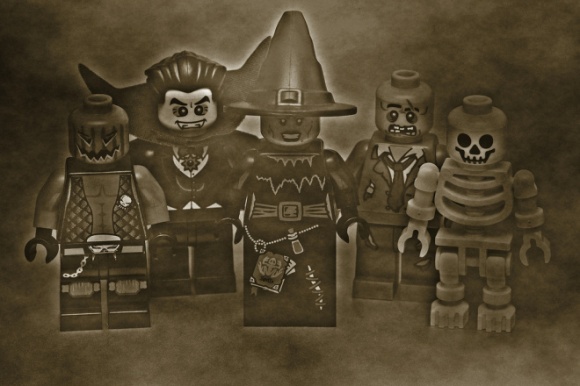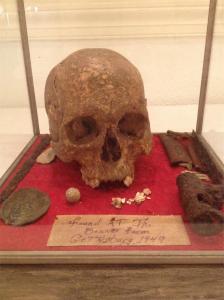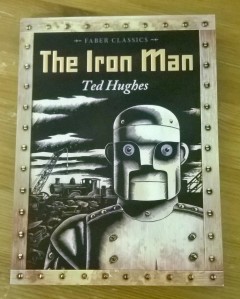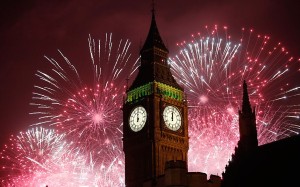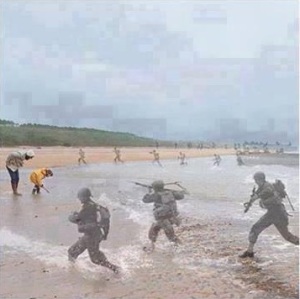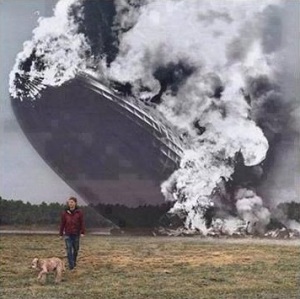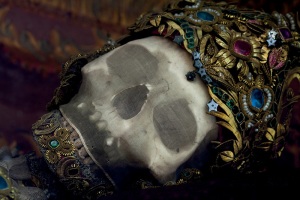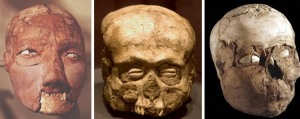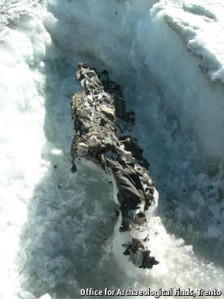
While talking to people at the graduation, I realised that many of them didn’t really know much about the place I come from, and so I thought that as most of my followers and visitors on here are not from the UK, you probably know even less about it. As I said in my post Life Update #1, both myself and my partner come from Stoke-on-Trent, which is a city in the Midlands. The place is most famous for its ceramics industry that made the city known across the world as ‘The Potteries’, with the likes of Wedgwood, Spode, Minton, Royal Doulton (despite originating in London), Moorcroft, Clarice Cliff and Steelite all being based here. During the city’s peak, there were several thousand pottery companies producing wares, of varying size, production capacity and renown. However, this image off the ‘Telegraph’ website sums up the state of the pottery industry in the city now…

Behind that mound of rubble can be seen the tops of two structures known in Stoke as ‘bottle ovens’, and these are (or were) the defining features of the region’s skyline. These kilns were once part of pottery factories (or ‘pot banks’), being the actual ovens in which the ceramics were fired, and in the 18th, 19th and early 20th centuries, came to dominate the city.

An 1898 OS map showing a small area of Middleport, Stoke-on-Trent, with bottle ovens marked in red.

Several images of the Stoke-on-Trent skyline in the 19th century.
With the decline of the pottery industry due to cheap foreign produce and the increasing appeal of sending manufacture to the Far East, many of these kilns have been demolished, leaving the handful that are left as Listed structures and important symbols of the region’s past, as well as emblems that the place can use to define itself.
Indeed, the City of Stoke-on-Trent is an interesting one that is not easy to define. From 1910 until 1925, it was a borough, made up of the ‘Six Towns’ of differing administrative and district status: Burslem, Hanley, Stoke (or Stoke-upon-Trent), Tunstall, Fenton and Longton, and numerous smaller settlements and areas. Then, in 1925 it gained City status, with Hanley becoming the main commercial centre of the city. Stoke retained the administrative and religious focus, but the former is now also being moved to Hanley, with the latter being pretty much all that is in Stoke itself besides a railway station. Stoke (the town- the city is confusingly refered to as simply ‘Stoke’ too) was where the first church was built in the region in the 7th century, with the name ‘Stoke’ or ‘stoc’ referring to a ‘place’. This has been interpreted as being a holy place, but may have also been a farm, or a crossing place where two roads meet. However, there are remains of a Saxon church and stone cross in Stoke town, near the site of the present Minster Church of St. Peter ad Vincula.
Out of all the towns, Burslem was the most prolific for ceramic production, becoming known as the ‘Mother Town’ of the Potteries, and it is here that the earliest evidence for pottery production in the city has been found, dating back to the medieval period. This was found by Channel 4’s ‘Time Team’ when they came to excavate on the site of Josiah Wedgwood’s first factory, the Ivy House Works, in Burslem town centre in 1998, and I’m on the end of the programme in the crowd, madly waving!

These images are incredibly naff, but are about all I can find on the web from the ‘Time Team’ dig in Burslem. I have my own images from the time, but can’t put my hand on them at present. Note the late great Prof. Mick Aston in stripey fleece, and the building in the top right, which is the only extant part of Wedgwood’s Ivy House works.
As well as ceramics, Stoke-on-Trent has provided the world with several other people and things, too. It was here that William Clowes and John Bourne (both born in Burslem) founded Primitive Methodism at the turn of the 19th century, and in the city that Reginald Mitchell, the designer of the Spitfire, was born. Also, the author Arnold Bennett (the Potteries answer to Charles Dickens) immortalised the towns in his works such as ‘Anna of the Five Towns’, ‘The Card’ (made into a 1952 film starring Alec Guinness and filmed largely in Burslem), ‘Clayhanger’ and ‘The Old Wives’ Tale’. He was friends with H. G. Wells, who stayed in Stoke with Bennett in 1888 and later wrote the short story ‘The Cone’ about the Shelton Bar Iron and Steelworks in the city. Here we also come to a further industry that once powered the city- steel production. Similarly, the region was also well-known for coal mining, but this died when the rest of the mines went bust under Thatcher.
More recently, the city has become known for its football in the form of Stoke City and the less-successful Port Vale, but the latter is perhaps better known for its most famous supporter Robbie Williams, who was born in Tunstall and raised above a pub (The Red Lion) in Burslem. Incidently, the pub is next door to the building shown on the top right of the ‘Time Team’ image.

From left to right: Arnold Bennett (1867-1931); a Spitfire; Robbie Williams; the angel weathervane on the clocktower of Burslem Town Hall, which is believed by some to have inspired Robbie’s hit ‘Angels’
I don’t suppose that Stoke is that bad when I write about it like this- it has had a fascinating and quite important past, and has given the world quite a few things. Did I mention Henry Faulds (1843-1930), who developed the technique of fingerprinting? He lived out his years and is buried in the city. And Anthea Turner? …yeah. Perhaps I’ll leave that last one…
No- I don’t hate Stoke. I just feel that now the place lacks ambition and drive, and where I want to get with my life, I can’t do it here. I hope, however, that you have learnt something, and now will know where I am talking about when I mention Stoke!



